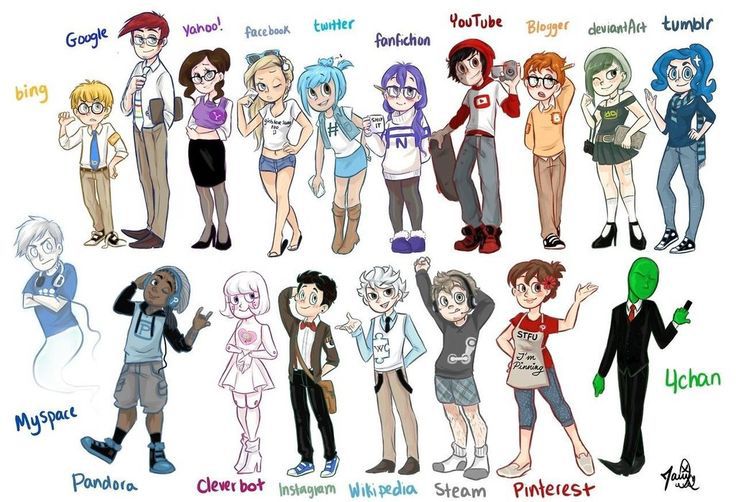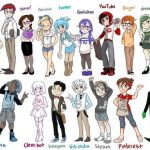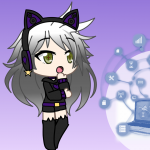[Part 7 of 9: The Social Animal on Social Media, Part 1,
Part 2, Part 3, Part 4, Part 5, Part 6, Part 8, Part 9]
When you have an intact, healthy sense of worth, you value other people. You know who you are, which means you can accept others as they are. When you are not sure that who you are is good enough, you will do your darndest to prove that you are better than someone else.
Iyanla Vanzant
We have all experienced prejudice, or been prejudice towards someone else at some point in our lives. Social psychologist Elliot Aronson, in The Social Animal, defines prejudice as:
A hostile or negative attitude towards a distinguishable group of people on the basis of generalisation derived from faulty or incomplete information.
Prejudice behaviour can be based on gender, race, sexuality, religion, class, location, looks, intelligence, and so on. The list is a long one.
Spiritual life coach Iyanla Vanzant said on Supersoul Sunday that prejudice – she was talking in particular about racism – is a form of dishonesty, and has in the US historically taken the form of : I am superior because I said so. And even today, sections of US society still function on some dishonest assumptions. If certain groups of people look and behave differently, then they are inferior and deserve less. Vanzant said that the US must have a conversation about this dishonesty and find a different way of living together, otherwise more tragic acts of violence will occur.
Subtle prejudice
We all like to think we are educated and thus, we know that prejudice is wrong. However, Aronson says that sometimes we fool ourselves and behave in a prejudice manner even though we don’t believe we do. We engage in subtle prejudice. For example, when people deny that racial or sexual discrimination continues to be a problem, and behave antagonistically towards any group which encourages conversation around these discriminations.
Men may behave in what they deem to be chivalrous manner, and provide protection and affection to women which really is just prejudice. They are judging women to be weaker and crossing boundaries. This behaviour is not chivalrous, it is just patronising. It is benevolent sexism.
Aronson’s research shows that people will engage in prejudice behaviour if they can deny it. Otherwise, they may try to justify their words and behaviour. For example, citing the Bible and referring to family values instead of acknowledging their prejudice towards people who are gay or bisexual.
Stereotypes
Stereotypes facilitate prejudice and deny someone their right to be seen as a unique individual with their own positive or negative traits. Instead, we attribute characteristics and we self-attribute characteristics negatively and positively.
Apparently, this is left over from our decision making abilities back when we were living in tribes. We saw very few outsiders and when we did, we immediately had to decide if someone was friend or foe. So, we used stereotypes as shorthand to categorise the people we meet and imply lots of information about them.
Because, stereotypes encapsulate a lot of information and are a handy short cut when communicating, they are regularly used and new ones created today by mass media.
Think how the media normally describes: the single mum, the banker, asylum seekers, the WAG, or how Islam and Muslims has been confused, simplified and represented by the press since since 9/11.
Research shows that thanks to advertising and TV women are still taught to feel that they are less important than men, and behave in silly ways.
We tell stories about others and about ourselves to encapsulate information, which can be negative like stereotypes, or they may be just a way of identifying ourselves with labels or things that we do. For example, I am: female, computer scientist, yogini, mum, cat lover. These are our social identities.
However, like stereotypes, social identities can be used negatively. And, then once we believe something about someone or about ourselves, we take that as truth, as reality. For our beliefs create our reality.
Causes of prejudice
Evolutionary psychologists believe that we are basically predisposed to favour our own tribe family, culture, and to fear outsiders. However, as the film Zootopia so aptly demonstrates, if we all just decide to believe that we are biologically programmed to behave a certain way, then nothing will ever change.
We have to take responsibility for our prejudices.
Aronson has a list of reasons as to why people are prejudice:
- Economic and competitive: If resources are scarce and people are competing for the spoils then this will breeds prejudice. One example is how Chinese immigrants were treated very badly during the Californian Gold Rush and railway construction.
- Displaced aggression: If people feel that they have been treated badly, then they will seek to retaliate and blame others. Like Hitler’s behaviour towards Jewish people, blaming them for World War I.
- Maintenance of self-image: It is easier to live with ourselves if we think of other people as sub-human – like the slave trade.
- Dispositional prejudice: some people are prejudice towards others because they have learnt that from their parents and/or it is prevalent in the culture within which they live. When this is so entrenched, it is difficult to find another way of thinking.
- Comformity: People are prejudice because it is a social norm and everyone behaves the same way. We are conformists for so many reasons.
Prejudice on social media
Prejudice online is not new. Even as early as 1995, feminist Jude Milhon was urging women to toughen up online when faced with bullies and abuse.
In this series we have seen that social media facilitates aggression and hatred. People will conform and only say what they think others want to hear online. Or, they will find liked minded people in order to vent their anger or justify their behaviour.
It is very easy in a tweet to encapsulate an argument and misrepresent what someone has or hasn’t said in order to prove a point. This can stir up emotion and because people respond more readily to information which causes a reaction, this can quite easily escalate towards aggression, argument, and all the other bad behaviour we witness online.
However, not all is lost, social media can be used for change because people reach out and support one another more easily than they could do in the real world, crossing groups and providing inter-group support.
Reducing prejudice
Aronson says that if you engineer society to facilitate inter-group support – if you set up different groups of people so that they have equal status and equal contact between them, then prejudice is automatically reduced. This is because regular exposure to the groups of people you might have prejudice towards reduces the dissonance of beliefs you may hold. And, a proper mixture of people reduces the need for anyone to reach for their social identity and band together. Interdependence forces people to work together and get to know people.
Other research has show that if we reduce competition in class and make winning a dysfunctional activity, kids learn to work co-operatively, instead of operating a zero sum approach to life.
Only by getting to know people do we learn to empathise with them and empathy is key. We learn empathy and we can teach empathy. However, we can’t just wait for the next generation, as Iyanla Vanzant said, we need to be honest about the dishonesty behind prejudice and we need to question the beliefs we hold in order to discover truth. We need honest, empathetic conversation. Once we do, we will be better equipped to advocate the next generation into a more equal world, one without prejudice.





